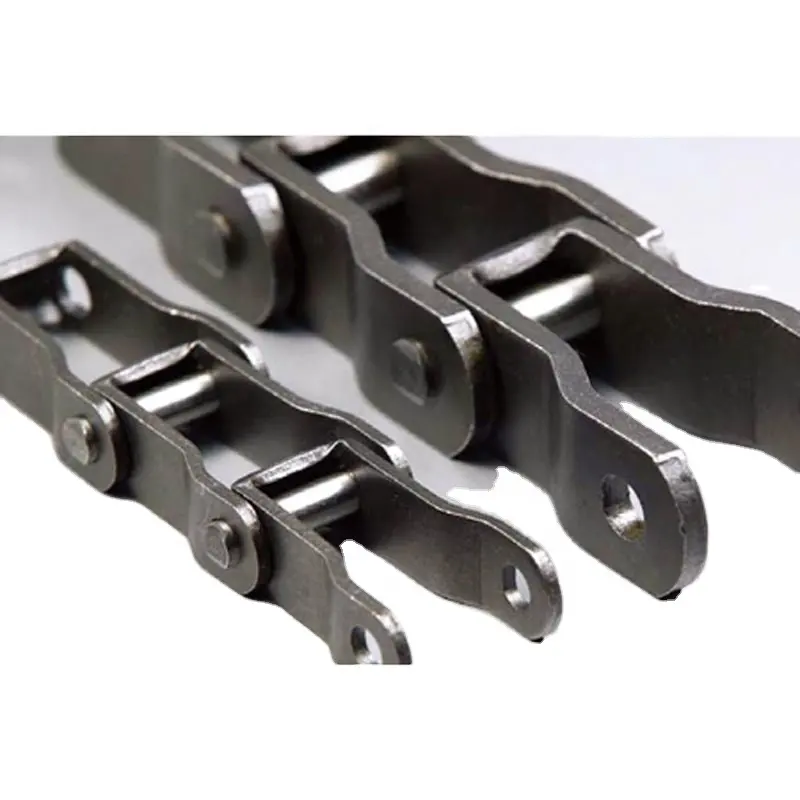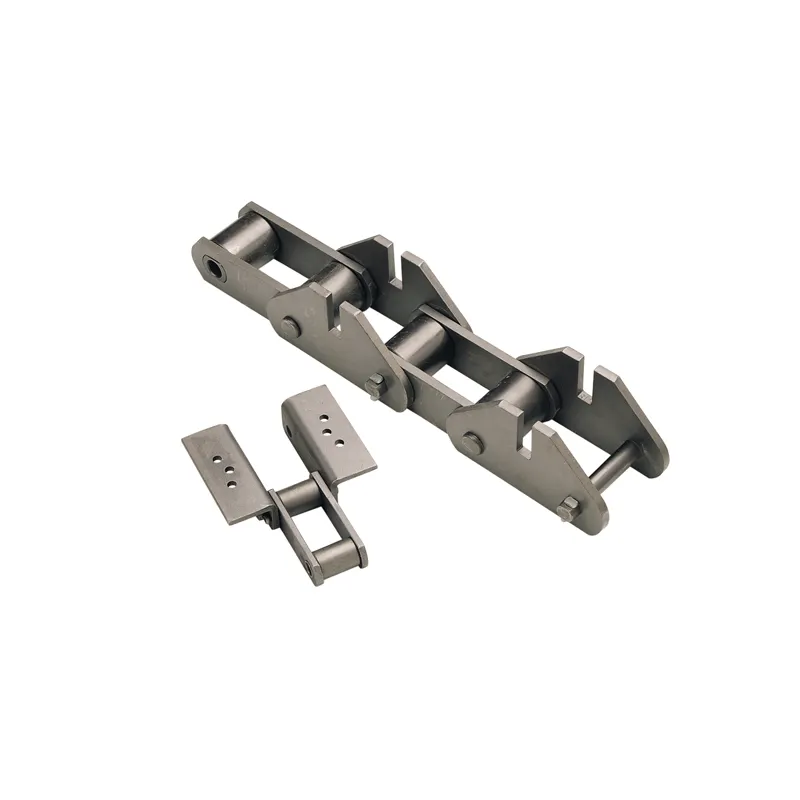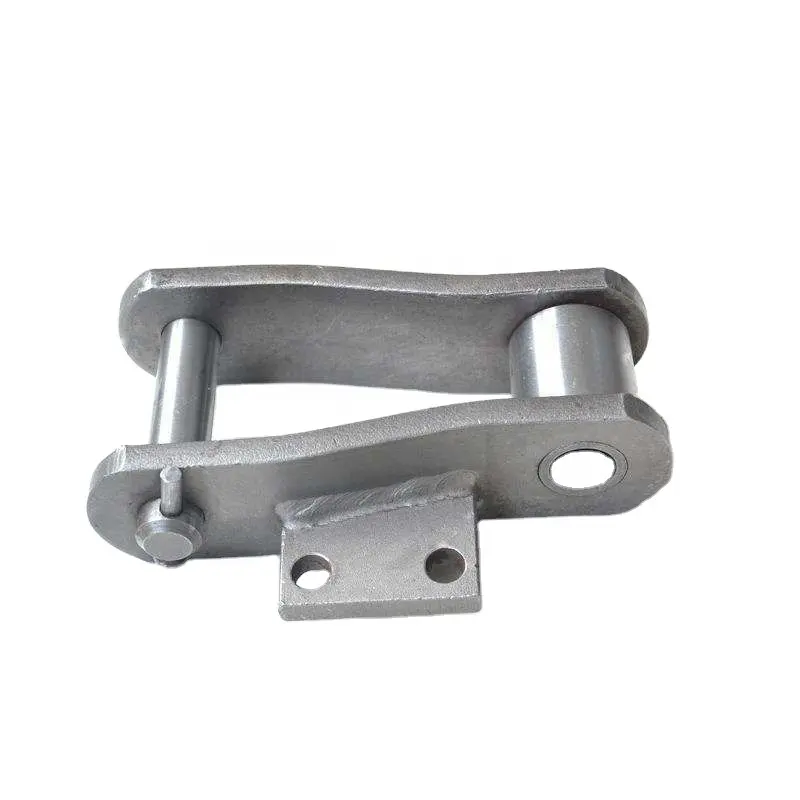Product Description
High Quality Simplex Chain Standard Conveyor Gear Double Pitch Short Pintle Cast Iron Transmission Stain Steeling Metric Roller Simplex Chain
A simplex chain is a type of roller chain commonly used in various industrial and mechanical applications for power transmission. Simplex chains consist of a series of linked plates connected by pins and rollers, which use sprockets to transmit power between 2 rotating shafts.
The links of a simplex chain are typically made of hardened steel or other durable materials, and the rollers are designed to reduce friction and wear between the chain and sprockets. Simplex chains are available in various sizes and configurations to meet the specific needs of different applications.
One advantage of simplex chains is their ability to transmit high torque and power with relatively low noise and vibration. They can also operate at high speeds and in a wide range of temperatures and operating conditions.
Proper selection and installation of simplex chains is important to ensure their efficient operation and optimal performance. Careful consideration should be given to the application’s specific requirements, such as the torque and power requirements, operating speed, and environmental conditions.
Regular inspection and maintenance of the simplex chain is also important to ensure its longevity and efficiency. The chain should be regularly inspected for wear and damage, and the lubrication should be checked and replenished according to the manufacturer’s recommendations to ensure smooth and reliable operation.
In addition, the chain should be properly tensioned and aligned with the sprockets to prevent excessive wear and damage, and the sprockets should be regularly inspected for wear and damage to ensure proper engagement with the chain. Proper filtration and fluid cleanliness are also important to prevent contamination and wear on the chain and other components.
/* March 10, 2571 17:59:20 */!function(){function s(e,r){var a,o={};try{e&&e.split(“,”).forEach(function(e,t){e&&(a=e.match(/(.*?):(.*)$/))&&1
| Usage: | Transmission Chain, Drag Chain, Conveyor Chain, Dedicated Special Chain |
|---|---|
| Material: | Stainless steel |
| Surface Treatment: | Oil Blooming |
| Feature: | Oil Resistant |
| Chain Size: | 1/2"*3/32" |
| Structure: | Roller Chain |
| Samples: |
US$ 9999/Piece
1 Piece(Min.Order) | |
|---|

How do pintle chains handle misalignment between sprockets?
Pintle chains are designed to handle a certain degree of misalignment between sprockets, providing some flexibility in their operation. The ability to handle misalignment is essential in many industrial applications, where perfect alignment between sprockets may be challenging to maintain due to various factors.
Flexibility and Articulation:
Pintle chains are constructed with interlocking link plates and pins, which allow for some articulation between the chain links. This design enables the chain to bend and flex as it moves around the sprockets, accommodating slight misalignments without causing undue stress on the chain.
Compensating for Misalignment:
When pintle chains encounter misalignment between sprockets, they can adjust their shape slightly to compensate for the deviation. This feature helps to reduce wear on the chain, sprockets, and other components of the power transmission system.
Tolerance Limits:
However, it’s essential to note that pintle chains have specific tolerance limits for misalignment. Excessive misalignment beyond these limits can lead to premature wear and failure of the chain. Therefore, proper alignment during installation and regular maintenance to check for alignment issues are necessary to ensure optimal performance and longevity of the chain.
Guidelines for Proper Alignment:
To achieve the best performance and avoid premature wear, consider the following guidelines for proper chain alignment:
- Make sure sprockets are precisely aligned on their respective shafts.
- Check that the shafts supporting the sprockets are parallel and at the correct distance apart.
- Use appropriate tools and measurements to verify sprocket alignment during installation.
- Regularly inspect and adjust sprocket alignment if misalignment issues arise during operation.
Benefits of Proper Alignment:
Properly aligned pintle chains offer several benefits:
- Reduced Wear: Proper alignment minimizes wear on the chain and sprockets, increasing their lifespan.
- Smooth Operation: Optimal alignment ensures smooth and reliable chain movement, reducing the risk of chain jamming or skipping.
- Improved Efficiency: Correct alignment contributes to the overall efficiency of the power transmission system, reducing energy losses and improving performance.
In summary, pintle chains can handle some misalignment between sprockets due to their flexible and articulating design. However, maintaining proper alignment within the recommended tolerance limits is crucial for ensuring the longevity and reliable performance of pintle chains in industrial applications.

Can pintle chains be used in wastewater treatment and sewage systems?
Yes, pintle chains can be used in wastewater treatment and sewage systems for various applications. These chains are designed to handle heavy loads, continuous operation, and harsh environmental conditions, making them suitable for use in such demanding settings. Some of the specific applications of pintle chains in wastewater treatment and sewage systems include:
- Conveyor Systems: Pintle chains are used in conveyor systems to transport solids, sludge, or other materials through the treatment process. They can handle heavy loads and resist corrosion, making them suitable for moving abrasive and corrosive materials.
- Bar Screens and Rakes: Pintle chains are commonly used in bar screens and rakes that remove large debris and solids from wastewater. The robust design of pintle chains allows them to withstand the forces involved in pulling and lifting debris out of the water.
- Clarifiers and Thickeners: Pintle chains are used in clarifiers and thickeners to help separate solids from liquid wastewater. These chains operate under high torque and slow speeds to ensure effective separation.
- Aeration Systems: Pintle chains can be found in aeration systems where they are used to support and move diffusers or aerators that introduce air into the wastewater to facilitate biological treatment.
- Sludge Dewatering: Pintle chains are utilized in sludge dewatering equipment, such as belt filter presses, to squeeze and remove water from sludge before disposal.
- Scrapers and Skimmers: Pintle chains are employed in scrapers and skimmers that remove floating debris and scum from the water’s surface in sewage treatment basins.
When using pintle chains in wastewater treatment and sewage systems, it is crucial to select the appropriate chain material and lubrication to ensure resistance to corrosion and chemical exposure. Additionally, regular maintenance and inspection are essential to prevent chain wear and ensure continuous and reliable operation in these critical applications.

What are the advantages of using a pintle chain in specific industries?
Pintle chains offer several advantages in specific industries due to their unique design and robust construction. Here’s a more detailed explanation of the advantages of using a pintle chain in specific industries:
- Agriculture: In the agricultural industry, pintle chains are preferred for their ability to handle heavy loads, making them suitable for conveying grains, fertilizers, and other bulk materials. They are commonly used in equipment such as harvesters, balers, and spreaders.
- Mining and Construction: Pintle chains excel in the mining and construction industries where heavy-duty conveying is essential. They can withstand tough conditions and handle materials like coal, ores, and aggregates with ease.
- Wood Processing: Pintle chains are well-suited for the wood processing industry, particularly in sawmills and lumber handling. They can efficiently transport logs and lumber through various stages of processing.
- Wastewater Treatment: In wastewater treatment plants, pintle chains are used for applications like sludge handling and dewatering due to their rugged design and resistance to corrosion.
- Forging and Heat Treatment: Pintle chains are utilized in industrial ovens and furnaces for forging, heat treatment, and other high-temperature processes. Their durable construction ensures reliable operation in extreme heat.
- Oil and Gas: Pintle chains find applications in the oil and gas industry, particularly in oilfield equipment and offshore operations. They can handle the heavy loads and harsh environments associated with these applications.
- Marine and Shipping: Pintle chains are used in marine equipment for operations such as anchor handling and ship mooring, where their strength and reliability are critical.
- Heavy Machinery: Pintle chains are commonly used in heavy machinery, including tractors, bulldozers, and excavators, where they provide reliable power transmission and material handling capabilities.
In summary, pintle chains offer significant advantages in specific industries where heavy loads, rugged conditions, and reliable operation are paramount. Their unique design and construction make them suitable for handling bulk materials, withstanding tough environments, and providing positive drive mechanisms in various industrial applications.


editor by CX 2023-12-22




